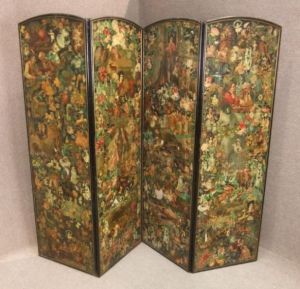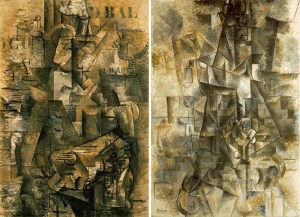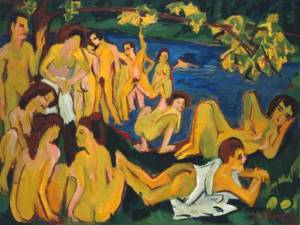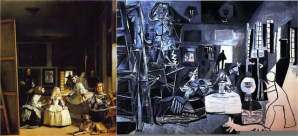Posted: October 10, 2014 | Author: gemmaschiebefineart | Filed under: SUBJECT, Subject - Contextualisation | Tags: architectural collage, art, art student, art theory, artincontext, artist, artists, assemblage, collage, composition, decollage, fineart, george braque, grayson perry, hannah hoch, inspired, james green, jennifer taylor, joan miro, Kurt Schwitters, lecture, max ernst, memory jugs, mimo rotella, peter blake, picasso, raoul hausmann, sculptural collage, sculpture |
Collage is the noun from the French ‘Coller’ – Literally “to glue” or “to stick.
There was a lot of imagery and variety of artists work shown to us in this lecture, it was a lot to take in but during the lecture you really felt captured and immersed into the world of collage. When the person giving the lecture is highly animated about the subject that they are talking about it definitely keeps your interest and James is definitely a collage enthusiast.
It started being used as a serious art form about 100 years ago in the form of Victorian layered collages and collage style screens.

In the 1900s – Printmaking techniques were created which enabled an easier production of posters etc. There were no Laws prohibiting people sticking up adverts onto buildings and so buildings in Paris got fly posted like giant collages.
Picasso created one of the first fine art collages in history. Picasso worked with George Braque. Cubism – Collages of different view points being stuck together in a painting. This is evident in Picasso’s, The Accordionist and Braque’s, Le Portugais.

Braque and Picasso were both influenced by collages on the streets. They were being introduced to text and so Letters became introduced in their paintings. They used whatever materials that they could get their hands on as they were poor. They moved form painting to cutting out wallpaper and newspaper and drawing onto it etc. Below is an image of “installation of Papier’s Colles in Picasso’s studio 1912”.
 \
\
Both Picasso and Braque created still life work with collage elements within them. Picasso’s, Still life with chair caning 1912 is an oil on canvas with a rope around it. It represents a glass table top and combines collage with painting. Braque’s still life on a table 1914 is more tactile and incorporates more materials.


Kurt Schwitters forms in space 1920 is a collage piece. He called his work “merz” which basically means shit. He used bits of rubbish, sweet wrappers/string and to him these materials all had equal right with paint. Schwitters has also made architectural collages and in his original merzbau in his Hanover studio 1923 – he creates and makes a room into a collage piece.

Herbert Read – “Schwitters is the supreme master of collage”.
Another artist that created rooms of a kind of collage is Jennifer Taylor. In her piece, Junk Painted White, she has filled a room with collected artefacts that she has hoarded over the years and painted white.

Hannah Hoch and Raoul Hausmann created Dadaism to reflect the irrational and crazy world around them during the war time. Tatlin at home 1920 collage. Mechanical Head 1919. Here found objects are almost mounted onto a wooden head. This is where a sculptural element becomes added into collage. Surrealism, Cubism and Dadaism were all happening at the same time and all of these movements incorporated collage. Max Ernst created irrational stories through collage. His collages look like they are printed, there are no joins or evidence of different components being stuck together.

Joan Miro – painting 1933. He would collect Victorian catalogues and cut out things, drop them into the floor onto paper and wherever they landed he would stick them . He used collage to make up the composition of the painting that he would do. Joseph Cornell 1903 – 1972 created boxes containing collage that are like a gateway into his mind.

DECOLLAGE – Mimo Rotella un poco in su 1954 – Instead of sticking things on this artist would rip them off which became known as decollage.

Peter Blake is an artist that very much seemed to be favoured by the lecturer. He was particularly interested in the varied elements and collaged areas in his piece Kamikaze. There are many different processes in this piece. Cryla and collage on board, elements stuck on the outside on the piece, combining painting with collage and sculptural or 3D collage. Peter Blake also painted paintings that were made to look like collage but actually contained no collage at all.
Collage – any collection of unrelated things
Eduardo Paolozzi Bunk 1972. Pop Artist that uses collage. From creating collages, Paolozzi went onto sculpture, this is evident in his piece – Cyclops 1958 which is a bronze piece. He has found lots of different objects and cast them and put them together. For example one of the eyes of the creature is a cast wagon wheel.
In relation to this, memory jugs incorporate a collage element. When someone died, others would collect their belongings and make these jugs and paint them as a memory of the person. Grayson Perry’s Tomb of the unknown craftsman also links in here.
James went on to talk about other collage artists and showed us images of their work, he mentioned C.A.A Dellashau, Adolf Wolfli, Martin Ramirez, David Ferry and Richard Gasper. He showed us how collage starts out as a series of unrelated things and then eventually have some kind of connection when it is all together. He referenced Shelly Campbell: Heat 2013 and Ian Wilkin’s work. Lastly, he finished by showing us his own collage work, which was really inspiring, it has encouraged me to think about ways that I may potentially be able to incorporate collage into my own work and that maybe I would like to take his field option based around the process of collaging. Also, this lecture opened my eyes to many artists that I have not previously been exposed to.

Posted: October 8, 2014 | Author: gemmaschiebefineart | Filed under: SUBJECT, Subject - Contextualisation, Subject - Documentation | Tags: appropriation, art, art research, art student, art technique, art theory, artincontext, artist, artistic response, artlecture, eduardo manet, expression, fineart, goya, influence, kirchner, lecture, leosteinberg, movement, parody, pastiche, picasso, pollock, rauschenberg, robertrauschenberg, velasquez, yinka shionibare |
As we are working on a fine art project that is related to appropriation, Chris Short delivered a very interesting and coherent lecture regarding the subject.
Everything that we do is an appropriation. We are never doing anything original, if we did then others would not know what we were doing. We appropriate all the time. Everything we learn is cultured and we all have an inner world that we express.
Chris Short used Kirchner’s Bathers 1909 as an example of an expressive piece of art portraying out Inner world. As an example of an artist delving around in psychoanalysis and the mind, he referenced Cathedral by Jackson Pollock.


Robert Rauschenberg parodies the idea of an original gesture: he makes a mark and then he does it again, showing that an expressive gesture could be and most likely is taken from people before him. This is particularly evident in his work entitled Factum and Tracer. Other artists work is being included in his work. His work is of a composite nature and there is a definite shift in attitude from Pollock’s work.


Around the time that these artists were at work: the enlightenment, science and the bible had promised progress for mankind and it was felt that if people could know more, then the world would be a better place. Greenburg spoke about progression from realism to abstraction and how art work changed from being life like and realistic to being more about the paint. He calls this progress. Artists had a sense that they were on a mission. Instead of original art, they recycled and took ideas from other places and other existing artworks. Art was important because it mattered to life. Rauschenberg recycled and deliberately appropriated. Artists were also appropriating from the masters during this time.
Appropriation was and is not about throwing a few things together, it was a radical shift of the world and the way that things were perceived.
Leo Steinberg talked about Rauschenberg and his ideas in his art theory book – Other Criteria: He referred to this new work as a flat bed picture plane and described the new technique as a shift to culture from nature. Art becomes about art in a new kind of way, bringing lots of cultural elements together to create a newer perspective on the world rather than directly referencing nature for example. He uses the example of a noticeboard to back up his points. A noticeboard is a place where a variety of different imagery and text and things come together, it demonstrates conflict and confusion. They are together on the board even though they don’t make sense and give you a different order of experience.
Rauschenberg worked with appropriated transferred photographs, interfering with each other like different noises on the same wavelength.Technology contributed to this shift in consciousness and the new means of production aided appropriation. Rauschenberg’s work surface stood for the mind itself. The piece of artwork created is analogue for the mind and the centre of the works of art are lost.

Eduardo Manet’s work – Rue Mosnier with flags 1878 shows disillusion and is looked at with a confused eye. When he looked at traditional art, he said it was too static. He felt that paintings should capture disorder and portray the movement of life. To him work should be expressive.
A Parody is a modern term that needs a norm to mock something against. Pastiche is a post modern term and is a “parody that has lost its sense of humour” – Jameson. Pastiche and parody open up the idea to take ideas, to be influenced, to repeat and to appropriate. Art shifted from a depth model to a surface model – reiteration. There was a loss of faith in the depth model and a mass loss of faith in progress – artists felt that there was no need to make anything new, they could just work from an influence. Things stopped being new and became appropriated.
Some examples that accurately demonstrate appropriation were shown in this lecture.
Franciso Goya’s The sleep of reason produces monster’s which was originally an attack on neo-classicism and Yinka Shionibares appropriation.


Pablo Picasso’s Las Meninas appropriated from the Diego Velasquez original.

Yinka Shionibare’s the Swing and Jean Honore Fragonard’s original painted that she was inspired by to create an appropriation.


Appropriations do not have to be almost a copy of the original artwork, artists can rework the visually explored artwork so that it becomes an analysis of the piece as well as a pastiche telling us something further about the work. New appropriations can also help artists reflect on the original pieces of art that their own work was appropriated from.
This lecture was incredibly valuable in terms of aiding my research for my subject work. We have been asked to create a body of work in response an existing artwork. Even though a lot of these artworks are almost copies of the original, I have been given examples of how not to appropriate as I do not want to make a blind copy of the work I have chosen. I want to use it to be inspired and create my own artwork in response to and inspired by my chosen piece. It was highly interesting to learn why artists no longer focused on the new and how using influences from others can be a successful gateway to creating exciting artwork that you may never have produced without a prior observation of other people’s art. I am coming to realise that even if I think that something that I have made is original, it most likely isn’t as subconsciously I could have seen something similar that stuck in my mind. I am looking forward to the end result of this project and to see how far I can actually take my original influence before it becomes too distant from the original and loses all tangents to it or vice versa how closely related my body of work could become.























Recent Comments